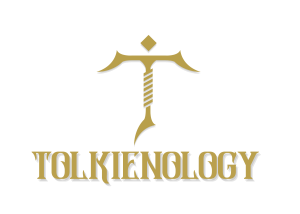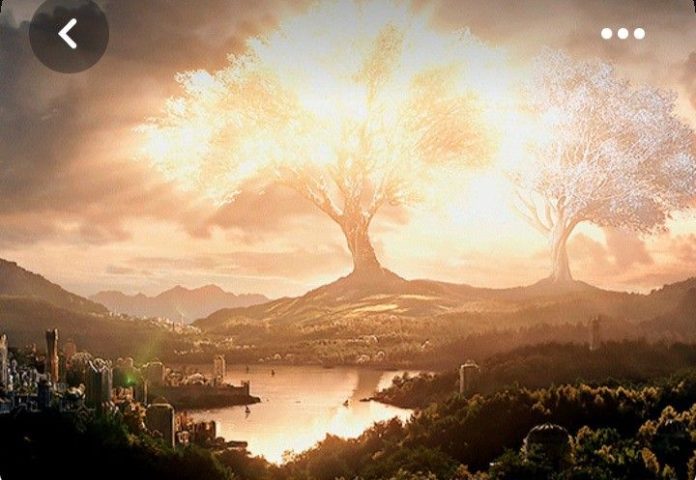J.R.R. Tolkien’s Middle-earth feels timeless, as though its stories and characters have always existed. But beneath its mythical surface lies a world shaped by Tolkien’s love for Norse mythology. From Odin’s wisdom to the tragic heroism of Sigurd, these ancient sagas gave Tolkien the foundation for his epic tales. However, as Tolkien wrote in one of his letters, “The stories are not ‘derived’ from mythological sources… but influenced by them.” This distinction—borrowing inspiration while crafting something new—is at the heart of Tolkien’s genius.
Gandalf: The Wandering Wizard
Inspired by Odin
When you think of Gandalf—cloaked, hat-wearing, staff in hand—you might not realize you’re picturing a figure straight from Norse mythology. Odin, the All-Father of the Norse gods, often disguised himself as a wandering old man to explore the world, seeking knowledge and aiding heroes.
In the Prose Edda, Odin is described as a mysterious figure who carries a staff and wears a wide-brimmed hat:
“Odin roams the earth, cloaked and hooded, a staff in his hand. His wisdom is great, but his purposes are hidden.”
Tolkien took this image and reshaped it into Gandalf, Middle-earth’s wise and compassionate guide. Like Odin, Gandalf is a guardian of knowledge and a protector of the world. But where Odin often acts for his own gain, Gandalf’s wisdom is
tempered by humility. As Tolkien wrote in The Letters of J.R.R. Tolkien:
“Of all the characters in my work, Gandalf is closest to being an angelic being… but unlike angels, he is also capable of error, and this makes him more human.”
This blend of mythic inspiration and moral complexity is what makes Gandalf so enduring.
Dwarves: From the Poetic Edda to Erebor
Tolkien’s Dwarves owe much of their identity to the Poetic Edda, one of the most significant sources of Norse mythology. In the poem Völuspá, the Dwarves are described as master craftsmen who dwell in the earth, forging legendary treasures. Even their names—Thorin, Balin, Dwalin—come directly from this text:
“There was Motsognir, greatest of all the dwarves, and Durin second; they made many man-forms, dwarves in the earth, as Durin said.”
But Tolkien didn’t just replicate these mythological Dwarves. In Norse sagas, Dwarves are often portrayed as greedy and untrustworthy. Tolkien transformed them into a proud and noble people, deeply loyal to their kin. Thorin Oakenshield, for instance, is a tragic hero driven by his love for his people and his longing to reclaim Erebor. His character combines the mythic grandeur of Norse tradition with a deep humanity, making him far more than just a reflection of ancient myths.
Smaug and Fáfnir: The Archetypal Dragons
No discussion of Tolkien’s use of Norse mythology would be complete without
mentioning Smaug, the iconic dragon from The Hobbit. Smaug’s obsession with treasure, his fiery wrath, and his cunning all trace back to Fáfnir, the dragon of the Völsunga Saga. Fáfnir, originally a dwarf, transforms into a dragon after succumbing to greed and jealousy. He hoards his gold and warns of its cursed nature:
“Beware, for the hoard brings death to all who seek it. None who take the treasure shall escape doom.”
(Völsunga Saga, Chapter 19)
Similarly, Smaug guards his vast hoard in the Lonely Mountain, but Tolkien gives him a sharp wit and arrogance that make him more than just a beast. As Tolkien explained in one of his letters, dragons in his world are “intelligent, but evil,” driven by greed but capable of psychological manipulation. This is evident in Smaug’s tense, verbal duel with Bilbo, where the
dragon’s slyness becomes as dangerous as his fire.
The Valar and the Æsir: Divine Echoes
Tolkien’s god-like beings, the Valar, reflect the structure and roles of the Æsir, the pantheon of Norse gods. Both groups are tied to nature and creation, and both act as stewards of the world. Manwë, the leader of the Valar, is reminiscent of Odin in his wisdom and role as a ruler. However, Tolkien’s portrayal of the Valar is far more harmonious than the often quarrelsome Æsir.
In his letters, Tolkien explained the moral purpose of the Valar:
“The Valar represent the angelic beings of a sub-creative order… their task is stewardship, not mastery.”
This distinction underscores Tolkien’s
emphasis on moral responsibility over power, a theme woven throughout his legendarium.
Cycles of History: Ragnarök and Middle-earth
Norse mythology views history as cyclical, with Ragnarök marking the end of one age and the beginning of another. Tolkien adopts this idea in The Silmarillion, where the fall of Númenor and the transition between the Ages of Middle-earth mirror this apocalyptic renewal.
Númenor, like the mythical Atlantis, is a great island kingdom brought to ruin by its own hubris. Its destruction is described in sweeping, cataclysmic terms:
“And Númenor went down into the sea, with all its children and its wealth, its halls and its towers, its tombs and its riches, and the world was changed.”
(The Silmarillion)
This theme of cyclical renewal ties directly to Tolkien’s belief in the resilience of creation. While civilizations may rise and fall, hope endures, and new ages bring new beginnings. As Tolkien wrote, “The world is indeed full of peril, and in it there are many dark places; but still there is much that is fair.”
Incorporating the cyclical power of Ragnarök, the wisdom of Odin, and the legacy of Norse Dwarves, Tolkien crafted Middle-earth as a world rooted in myth yet entirely original. His ability to borrow from ancient traditions while imbuing them with new meaning is what makes Middle-earth feel as real as our own world.
Next in the series: Anglo-Saxon Poetry and Beowulf







